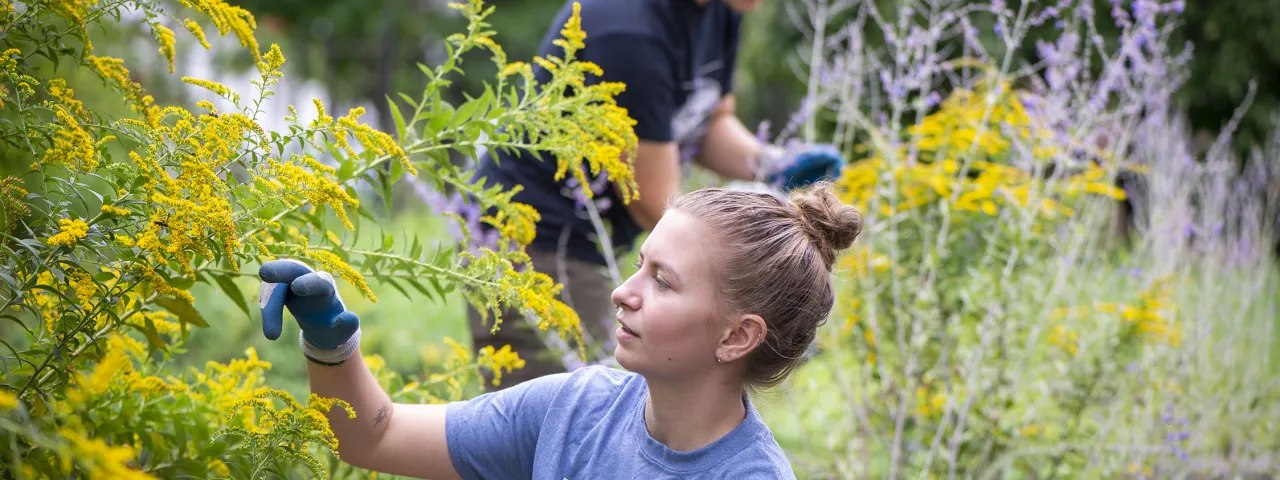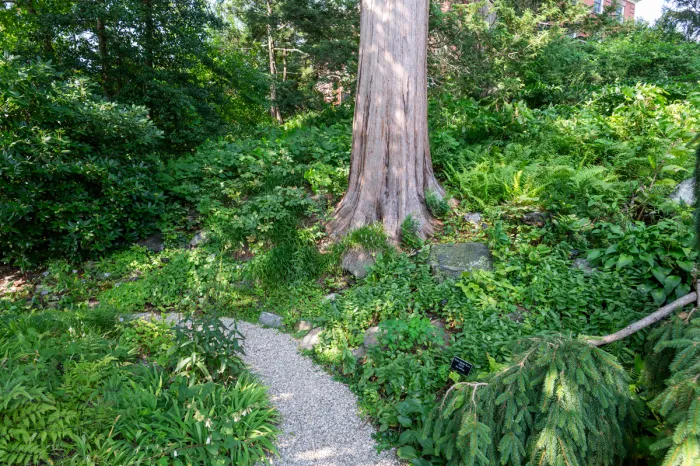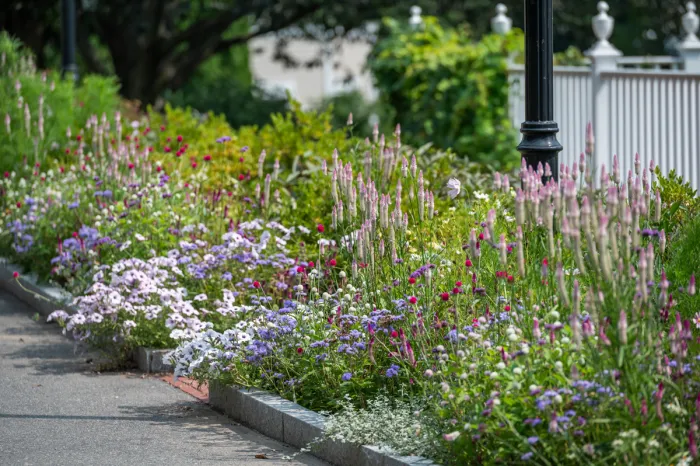Outdoor Gardens

Walking through the campus and exploring our outdoor gardens really paints the picture of how the entire campus was designed as a botanic garden, so integrated are these spaces within the campus. Discover all the gardens we put time and care into.
Discover the Gardens
For just over 100 years, Capen Garden has been both a quiet, beautiful sanctuary and a place of learning. This space features a small water fountain that lures in guests to the centerpiece perennial border designed by Syretha Brooks ’08. Other elements include a rose arbor, the Jill Ker Conway gazebo (named in honor of Smith’s first woman president)and surrounding tulip and annual beds, as new beds that showcase research in ecology, conservation and sustainability.
Located behind the president’s house, this terraced garden overlooks Paradise Pond and the Mill River. Named in honor of the late Beatrice “Happy” Oenslager Chace ’28, the garden has an open air pavilion and fragrant pathways that navigate this modern day play on monastic physic gardens that were the forebears of modern botanic gardens.
The Japanese Garden was built to demonstrate harmony with nature and offer a serene space for contemplation and reflection. It’s situated on the wooded hillside beside Paradise Pond, below the president’s house. Built in the 1980s in collaboration with the departments of East Asian Studies and the Department of Religious and redesigned in 2017, the garden incorporates elements of Japanese design within the context of a New England setting.
Established in 2007 on the south side of Lyman Conservatory, this garden complements the indoor cacti and succulent collection. In this garden you’ll find cold-hardy xerophytes, mostly from Mexico, western North America and southwestern U.S, that can tolerate the cold of New England.
Home to roughly 800 types of alpine, dwarf and woodland plants, the Rock Garden is the most intensely cultivated area on campus. Created in 1897, it’s modeled after the Rock Garden in the Royal Botanic Gardens, Kew, and is the oldest rock garden in North America.
Redesigned in 2019, the terraced rose garden on the slope below the President’s House is an outstanding display of stunning rose cultivars. This collection was curated to showcase the best of pest and disease resistant rose selections as well as the contributions of women to the world of hybridization and ornamental horticulture.
The Ruth Brown Richardson 1913 Perennial Border was planted in 1984, and was given in memory by Anne Richardson Mason ’47 and Sarah Richardson Batschelet ’74. The garden runs along the wrought iron fence near Lyman Conservatory and has been crafted to showcase a vibrant display of colors and textures from early spring through the first frost of fall.
Landscape architect Nancy Denig ’68 collaborated with Mary Elizabeth Moses Professor Emeritus of Geosciences John Brady to design the Smith College Rock Park, located between McConnell Hall and Burton Hall. In addition to enhancing Smith’s landscape, the rocks offer opportunities for study and a sunlit sanctuary tucked inside granite walls.
The Systematics Garden features a diverse array of flowering plant species, arranged in beds so as to reflect the current scientific understanding of their evolutionary relationships to each other. Students can observe and compare flower types and growth forms among the garden’s species, chosen for their botanical and evolutionary interest. As one of our oldest gardens, it not only holds Smith’s history of learning, but also the centuries-long quest of the botanical science community to better understand how plants became what they are today.
Flowering shrubs and perennials adorn this intimate spot created in 1986 to honor Gertrude Ridgway Stella ’37, director of the Alumnae Association for 20 years. The fence was designed by Elliot Offner, and the garden features his bronze sculpture Bittern Mother and Child.
Each April thousands of daffodils emerge on the hillside between Chapin House and Wright Hall. Jean Wilson ’24, a professor of history at Smith from 1927 to 1968, established the garden in 1980 in dedication to her sisters: Jessie Wilson ’22 and Agnes Wilson ’27.
In 2000, the Edith Bramwell Reilly Hand '52 Wildflower Garden was moved to the shallow wooded ravine south of Paradise Road and reimagined as a botanically rich woodland path, dotted with native spring ephemeral wildflowers. This hidden gem is an oasis of natural beauty, showcasing a diversity of centenarian maples, oaks and pines.



